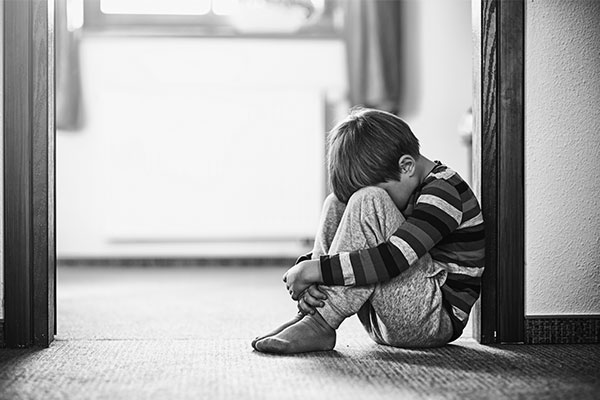Information and Resources for Teachers and Educators
We believe that mental well-being is central to ensuring a child’s best start. Schools—where children spend most of their waking hours— often recognize that addressing a student’s mental health and social emotional needs leads to better outcomes. Students are healthier, happier, and more likely to succeed. Yet many schools lack the resources to provide effective mental health services.
Schools help shape development of children and adolescents’. Children spend more than half of their waking hours in school. Data indicates that students are substantially more likely to seek mental health support when school-based services are available. School-based services may help reduce the stigma in seeking help for mental health concerns, one of the primary reasons that individuals and families do not seek support.
Research supports the importance of mental health services in schools.
We’ve done the research and collected a Top 10 list of school-based mental health best practices that positively impact student performance.
1. Make mental health part of an overall wellness strategy
Wellness is described by the World Health Organization as a state of “complete physical, mental and social well-being, and not merely the absence of disease or infirmity.” Mental and emotional health is a cornerstone of wellness. While overall health is nurtured through nutrition, exercise, sleep and medical care, mental health is also nurtured through positive experiences, loving, stable relationships and intentional, direct support that helps develop critical social emotional skills. Mental wellness should be discussed as part of overall wellness, as this framework helps remove stigma and increases support for services.
2. Screen for and identify issues to refer students to needed services
While all students benefit from mental wellness and social emotional learning, some students need additional mental health services. However, it’s hard to help students if you don’t know which ones need help. Early identification of potential problems is a crucial first step in promoting mental health and can best be achieved by appropriate screening.
The gold standard is to screen all students for mental health and ensure that educators and staff know how to recognize early signs and symptoms of mental health concerns. Universal screening can be controversial for schools, however. Administrators may be nervous about identifying students that need help if services are unavailable, particularly in rural or under-resourced communities.
03. Incorporate social and emotional learning (SEL) in schools
Social emotional learning is the process through which children acquire and apply the knowledge, attitudes and skills necessary to understand and manage emotions, set and achieve positive goals, feel and show empathy for others, establish and maintain positive relationships, and make responsible decisions. These skills are quite a bit different from the traditional “reading, writing and arithmetic” taught in schools, but research has proven that social emotional skills are essential
to success in school, work and life. Furthermore, building social emotional learning helps students gain resilience, which is the capacity to recover quickly from difficulties.
In 2001, Durlak Joseph and his colleagues conducted an analysis of school-based interventions, of universal Social Emotional Learning programs involving more than 270,000 kindergarten through high school students found that these students demonstrated significantly improved social and emotional skills, attitudes, behavior, and an 11-percentile point gain in academic achievement.
04. Establish and use school-based health centers (SBHCs) for mental health and substance use services in addition to physical health care
School-based health centers are clinics located on school campuses that offer both physical and mental health services. They are an effective way to improve students’ access to care, particularly in low-income communities where youth may have social, economic, and geographic barriers to care.
Data indicates that students are substantially more likely to seek mental health and substance use support when it is available at school. Further more, school-based clinics positively impact a variety of outcomes: one study showed GPA increasing by 5% and alcohol use decreasing by 15%.
05. Create partnerships with mental health professionals
Close relationships between schools and community mental health and substance use professionals are key to promoting mental health in schools. Schools could either provide their own mental health services internally or contract with community providers. Either way, community partnerships are essential.
06. Emphasize teacher wellness
A trusting relationship between teachers and students and a positive classroom atmosphere are important prerequisites for successful mental health intervention. However, many teachers feel overwhelmed by emotional and behavioral challenges in their classrooms. Burnout cascade, where difficulties with student behavioral management can negatively affect teacher–student relationships and the classroom environment, might harm both teacher and child mental health.
While self-care is important, teachers need support that goes beyond self-care and boundary setting. For example, teachers who experience traumatic incidents with their students might need help transitioning back to classrooms after these incidents. Schools can help teachers understand the issues and support teachers to be reflective in their needs.
07. Reduce stigma
The stigma—or perceived shame—surrounding mental health issues is one of the primary reasons that individuals and families do not seek services. By addressing the misconceptions and fears about mental health and educating students and teachers, schools can reduce stigma.
08. Use positive behavioral intervention and supports (PBIS)
Positive behavioral intervention and supports (PBIS) is a prevention-based framework designed to build social emotional learning into the every day school curriculum. The core of PBIS is school wide systems of support that include proactive strategies for defining, teaching and supporting appropriate student behaviors to create positive school environments. The purpose of schoolwide PBIS is to establish a climate in which appropriate behavior is the norm. Teaching-oriented, positive and preventive strategies are emphasized for all students in this framework. For more information, check out their website at https://www.pbis.org.
09. Incorporate trauma- informed principles
A child’s ability to cope is significantly undermined after witnessing one or more overwhelmingly stressful events, such as violence between caretakers or being abused. Traumatic experiences in one’s childhood can diminish concentration, memory and other abilities students need to succeed in school, and it can lead to poor coping skills, substance use, and smoking. Once schools understand the educational impacts of trauma, they can become safe, supportive environments where students make positive connections with adults and peers, manage their trauma symptoms so they can behave appropriately, and feel confident to learn.
Trauma-informed programs can be implemented in a variety of ways. Check out Alive & Well’s website for more information https://www.awcommunities.org
10. Prioritize suicide prevention
In 2017, suicide was the second leading cause of death for ages 15 – 24. Students who feel safe at school are over three times less likely to attempt suicide. The school setting is ideal for youth suicide prevention.






















